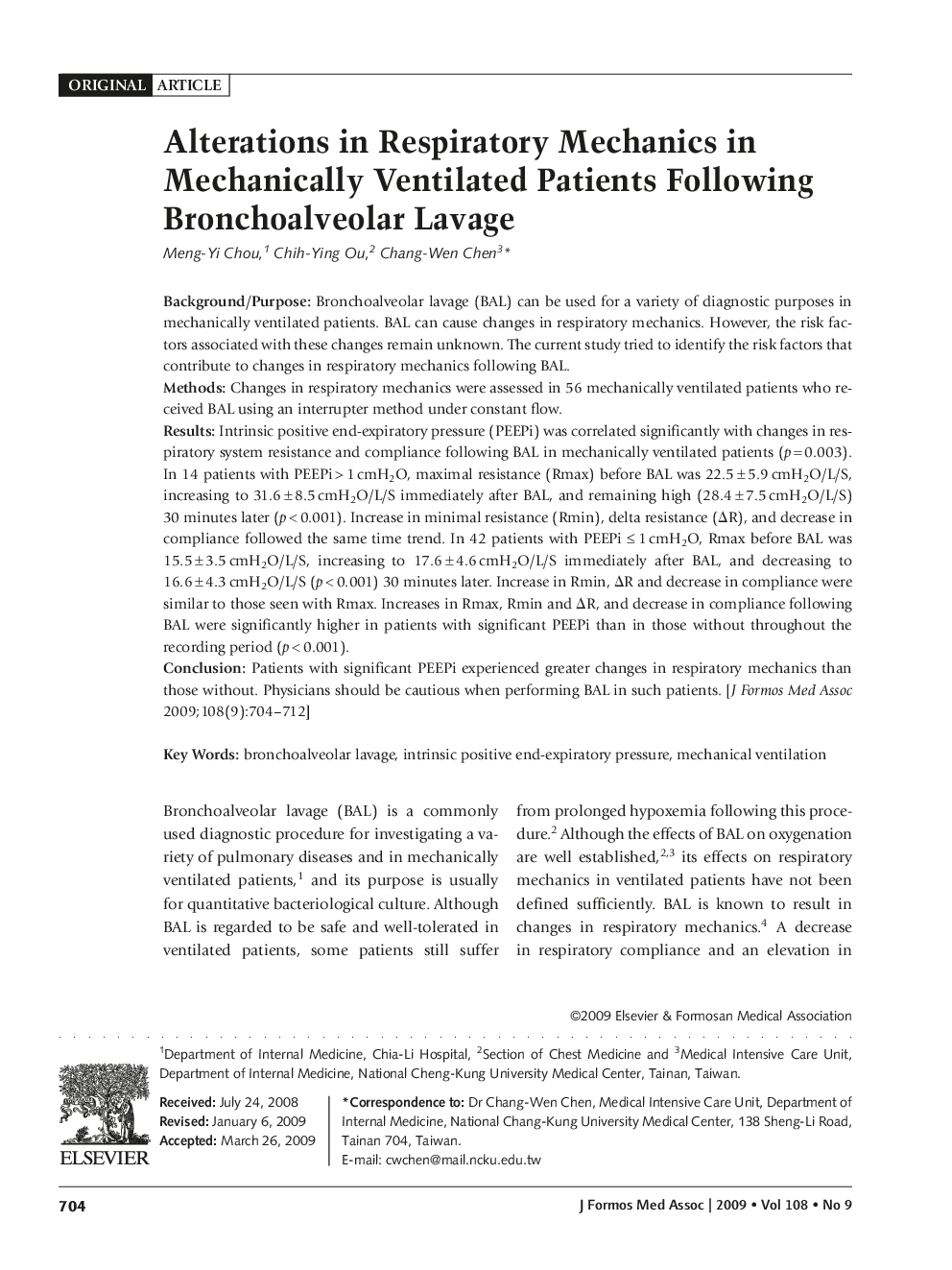| کد مقاله | کد نشریه | سال انتشار | مقاله انگلیسی | نسخه تمام متن |
|---|---|---|---|---|
| 3479578 | 1233459 | 2009 | 9 صفحه PDF | دانلود رایگان |

Background/PurposeBronchoalveolar lavage (BAL) can be used for a variety of diagnostic purposes in mechanically ventilated patients. BAL can cause changes in respiratory mechanics. However, the risk factors associated with these changes remain unknown. The current study tried to identify the risk factors that contribute to changes in respiratory mechanics following BAL.MethodsChanges in respiratory mechanics were assessed in 56 mechanically ventilated patients who received BAL using an interrupter method under constant flow.ResultsIntrinsic positive end-expiratory pressure (PEEPi) was correlated significantly with changes in respiratory system resistance and compliance following BAL in mechanically ventilated patients (p = 0.003). In 14 patients with PEEPi > 1 cmH2O, maximal resistance (Rmax) before BAL was 22.5 ± 5.9 cmH2O/L/S, increasing to 31.6 ± 8.5 cmH2O/L/S immediately after BAL, and remaining high (28.4 ± 7.5 cmH2O/L/S) 30 minutes later (p < 0.001). Increase in minimal resistance (Rmin), delta resistance (ΔR), and decrease in compliance followed the same time trend. In 42 patients with PEEPi £ 1 cmH2O, Rmax before BAL was 15.5 ± 3.5 cmH2O/L/S, increasing to 17.6 ± 4.6 cmH2O/L/S immediately after BAL, and decreasing to 16.6 ± 4.3 cmH2O/L/S (p < 0.001) 30 minutes later. Increase in Rmin, ΔR and decrease in compliance were similar to those seen with Rmax. Increases in Rmax, Rmin and ΔR, and decrease in compliance following BAL were significantly higher in patients with significant PEEPi than in those without throughout the recording period (p < 0.001).ConclusionPatients with significant PEEPi experienced greater changes in respiratory mechanics than those without. Physicians should be cautious when performing BAL in such patients.
Journal: Journal of the Formosan Medical Association - Volume 108, Issue 9, September 2009, Pages 704-712